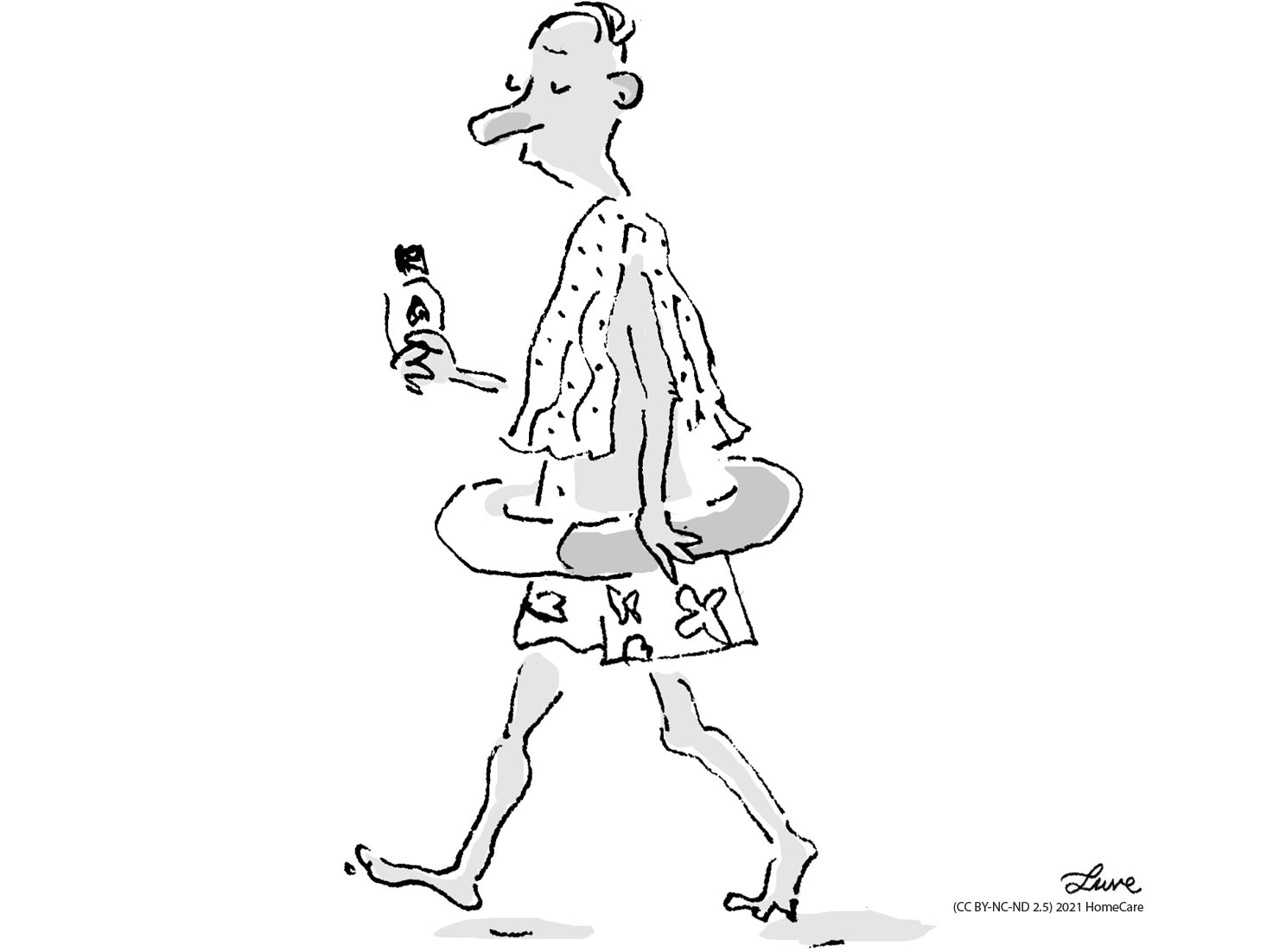
If there are no contraindications, the elderly person’s bath should take place in the bath. Older people often avoid bathing for fear of tipping over or being unable to lower on their own. Therefore, the safety of bathing should be supervised by the person caring for the elderly to prevent slipping or to provide assistance in the event of fainting.
The body washing includes: washing the face, ears, neck, upper limbs, chest, lower limbs, back and buttocks, intimate areas of the body (external genitalia and anus area).
The elderly should always be encouraged and motivated to self-wash if their health and fitness allow it. You can help wash the less accessible parts of the body (e.g. back or feet).
The basic rules for the body washing of an elderly person
![]() Bathing or showering should be performed not earlier than 2 hours after a meal
Bathing or showering should be performed not earlier than 2 hours after a meal
![]() Before taking a bath, warm up the bathroom
Before taking a bath, warm up the bathroom
![]() If the person has difficulty getting in or out of the bath, sit them on a chair next to the bath, then pass the elderly person’s legs to the bath. Grab the person from behind under the arms and help them slowly slide down into the water. If the person cannot slide down into the bath, then put a low stool in the bath or use a special seat – a bench adapted to hang it on opposite edges of the bath
If the person has difficulty getting in or out of the bath, sit them on a chair next to the bath, then pass the elderly person’s legs to the bath. Grab the person from behind under the arms and help them slowly slide down into the water. If the person cannot slide down into the bath, then put a low stool in the bath or use a special seat – a bench adapted to hang it on opposite edges of the bath
![]() Use warm water (38-41 degrees Celsius) and a mild soap so as not to irritate the skin (e.g. for washing babies or products specially designed for the care of the elderly)
Use warm water (38-41 degrees Celsius) and a mild soap so as not to irritate the skin (e.g. for washing babies or products specially designed for the care of the elderly)
![]() After washing, the skin should be lubricated with olive oil, lotion or cream, especially in places exposed to bedsores. In places exposed to chafing (where two surfaces of the skin touch, e.g. folds under the breasts in women), it is worth using a drying powder
After washing, the skin should be lubricated with olive oil, lotion or cream, especially in places exposed to bedsores. In places exposed to chafing (where two surfaces of the skin touch, e.g. folds under the breasts in women), it is worth using a drying powder
Particular attention should be paid to the intimate parts washing. Depending on the degree of independence, an elderly person may need our help to a varying extent in washing and caring for the intimate parts of the body.
Help in the toilet of the intimate parts of the body is doubly difficult, because these activities require a lot of diligence, but also coping with the emotions and shame of the elderly person, but also ourselves.
For female person
If the elderly person can wash themselves, put a lightly soapy washcloth on their hand, pour water over their intimate area and ask them to wash themselves. If you do this, put on disposable gloves and wash your intimate area – always in the direction from the genitals to the anus (this direction prevents the transmission of bacteria from the anus towards the genitals). Give the elderly a towel to dry or, if that is not possible, do it yourself.
After removing the washcloth, rinse the hand of the elderly person and then dry it.
For male person
If the elderly person is able to wash themselves, assist them and make sure they do it thoroughly, if not – put on disposable gloves and do the activity yourself.
![]() Some practical tips for the bathing
Some practical tips for the bathing
Back Next
![]()
Personal hygiene:30% complete
